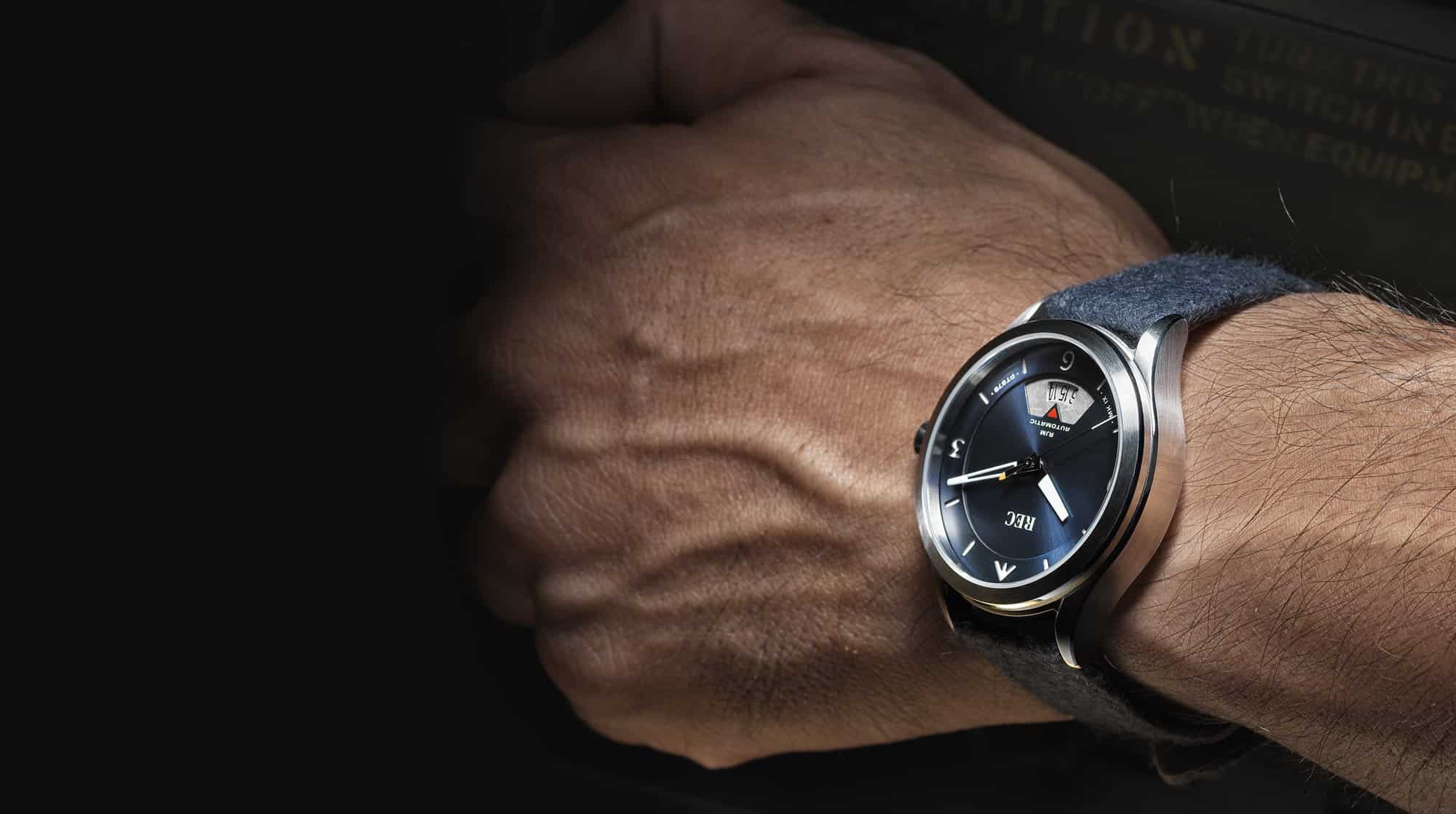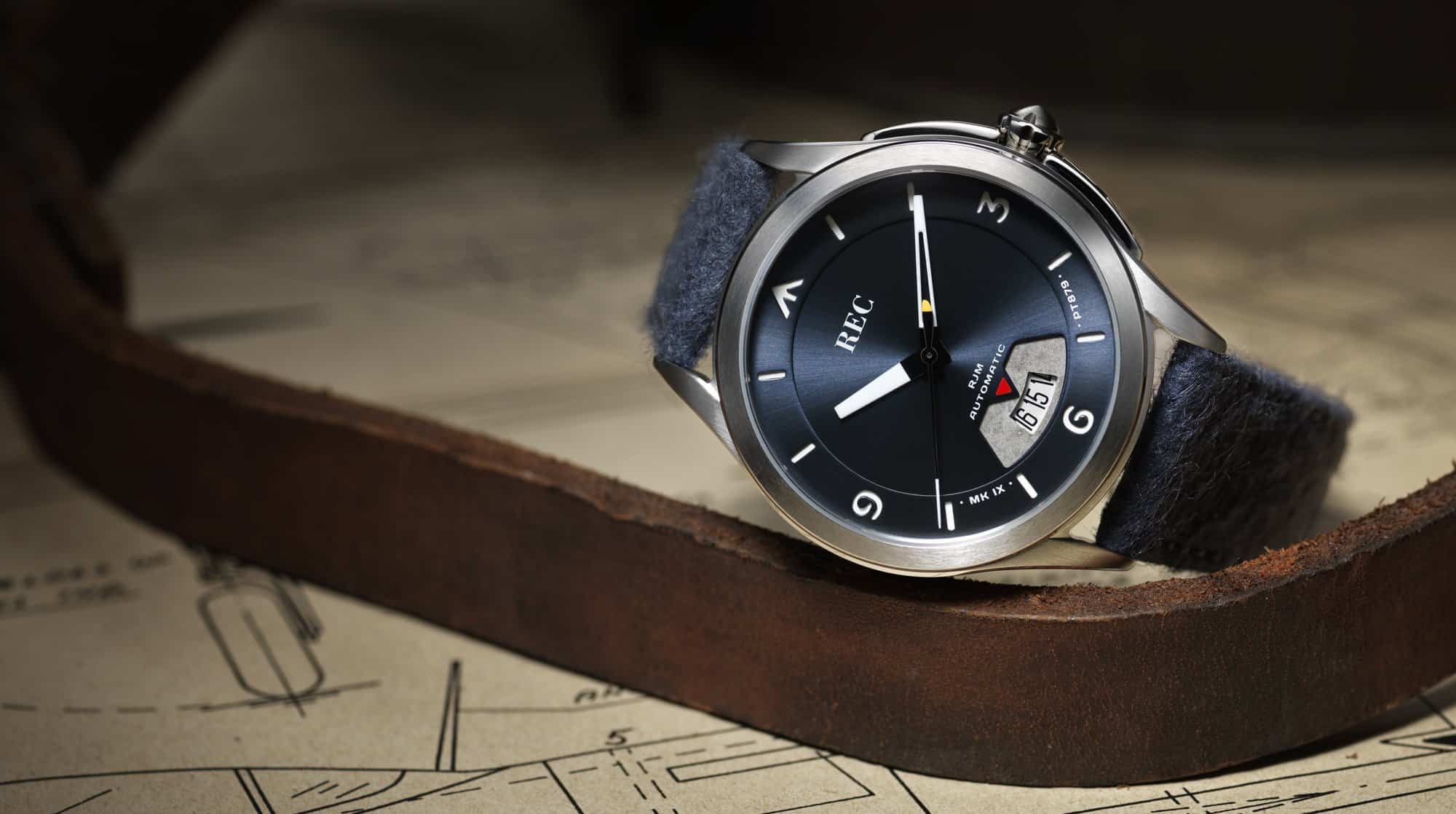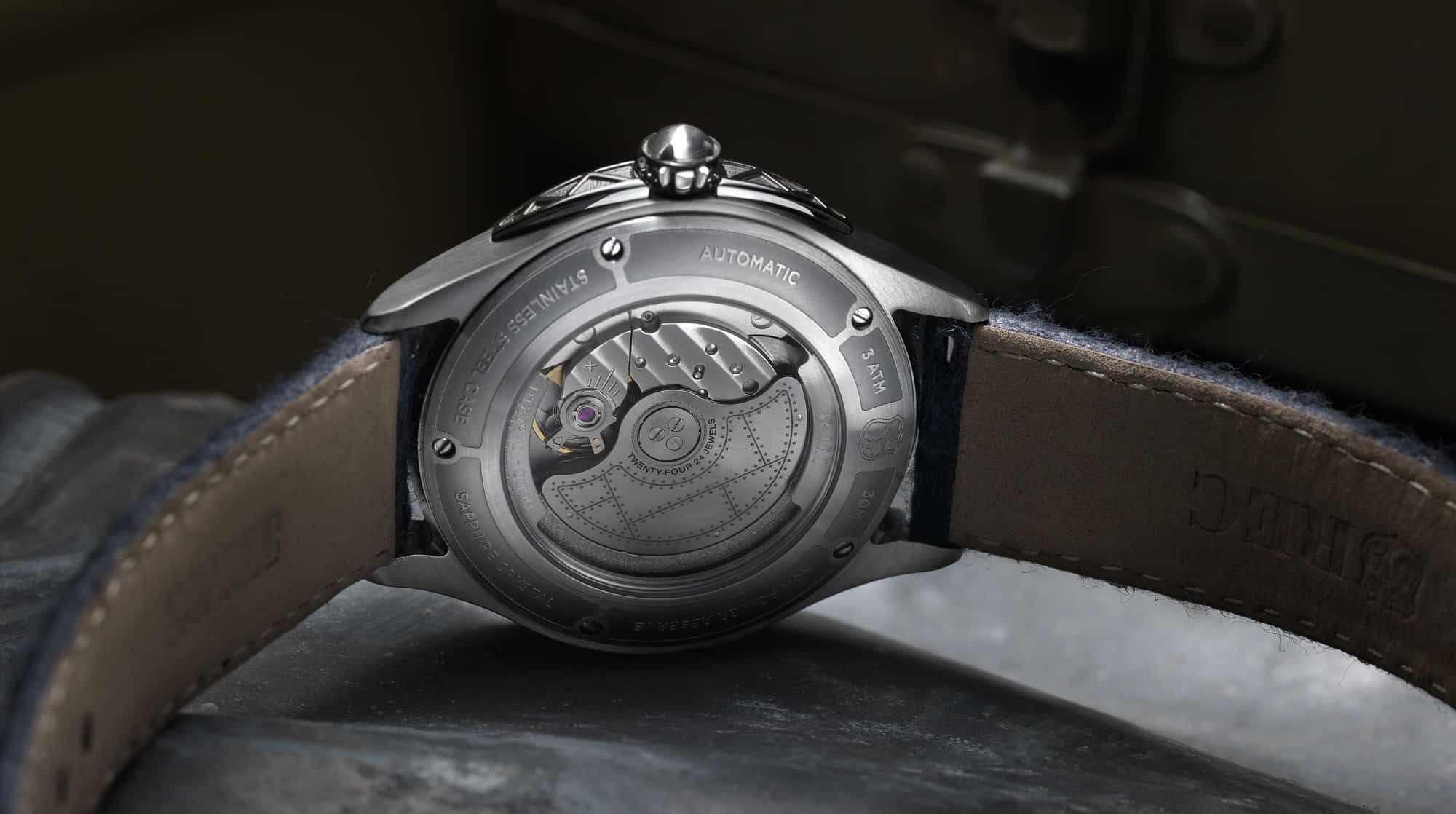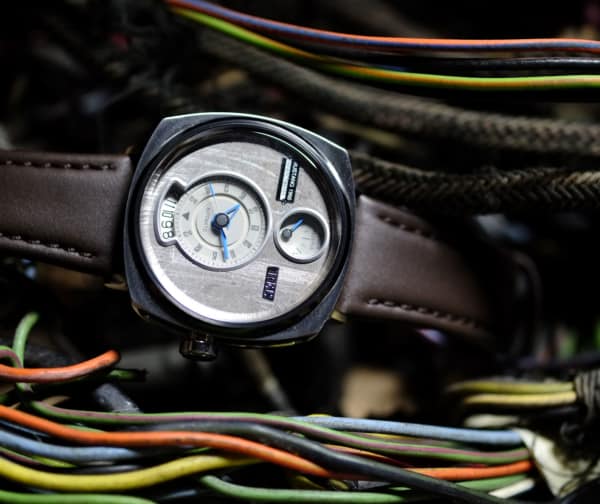The salvaged material used in the RJM Bluebird isn’t the only way that the timepiece pays tribute the Spitfire and those that flew it in the war effort. The dial is a deep blue that’s reminiscent of the uniforms of the Royal Air Force. The tip of the crown was designed to resemble the shape of the Spitfire’s nose, and the decoration visible on the rotor through the transparent case back is inspired by the distinctive rivet construction of the Spitfire. And, of course, the dial aesthetics are very much in the traditional aviation realm, with a triangular marker at 12:00 well lumed indices elsewhere, all in a sandwich dial construction. The case shape is simple, with classic subtly curved lugs, and although it has been upsized for modern tastes, it’s very much in the spirit of pilot’s watches of the 1940s. ![]()
It would be really easy to turn your nose up at what REC does as a gimmick. They’re certainly not the only watch brand to use salvaged material in the construction of a watch. It’s been done for years, at all price levels. Pieces of everything from the Titanic to the Wright Flyer have found their way into watches. REC, unlike some brands, seem guided by a genuine interest in making useful something that otherwise would have been discarded, and telling the story of the historic things that go into their timepieces. REC









 Featured Videos
Featured Videos










